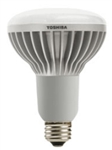Big news lighting fans! South Korea plans to ban production and imports of incandescent light bulbs. The country has seen the opportunity to make the switch to LED lighting and really save electricity. I, Dr. Bulb, am very pro-LED, and the possibility that a whole country could make the switch to LED lighting is very exciting.
South Korea has in the past, been very forward thinking on energy efficient policies. In 2008 a plan to phase out devices that were high energy users was put into place, and this ban on incandescent bulbs is part of that plan. LED light bulbs will cost the consumers and incredibly low 2,813 won, or $2.52 in energy per year. As compared to the average incandescent bulb that would cost 15863 won, or $14.19 in energy per year
A while back I would have been worried and skeptical of South Korea’s initiative because of the high price of LED bulbs. But since the cost of an LED light bulb is swiftly dropping below $10.00 or 11,173 won, it is being made affordable to anyone who would regularly buy incandescent bulbs. And it is not only homeowners who will be concerned with this, commercial buildings with hundreds of bollard lights or high bays will learn the benefits of switching to LED lighting. A large scale switch to LED high bays in a commercial building where there are 30+ stories to light can make a huge difference in the electricity bill.
For readers who are not hip to the differences between LED and incandescent lighting. Other than the reduced energy costs mentioned above, incandescent bulbs last for about 1000 hours, while LED bulbs last about 45,000 hours and can sometimes last up to 90,000. This means that over a lifetime a person can either go through 145 incandescent bulbs or 3 LED bulbs, thats a big difference. Incandescent bulbs run at an incredible 335*F, which means that they are wasting a large portion of the energy to heat. LED bulbs run at a cool 87*F making them efficient by also reduces the fire hazard of have a 300*F lightbulb in your home. These differences are all explained in this infographic made from our friends at sewelldirect.com.
South Korea’s energy initiatives will be difficult to manage and interesting to follow. According to a report on reuters.com shares in LED and LED component makers have experienced a major spike after the announcement of the ban of incandescent light bulbs. Hopefully the factories that make incandescent bulbs in South Korea can make a switch to LED bulbs where jobs are created and not lost. If this transition is performed successfully it will be a great example for the rest of the world on how to make the jump into an LED lit world.



